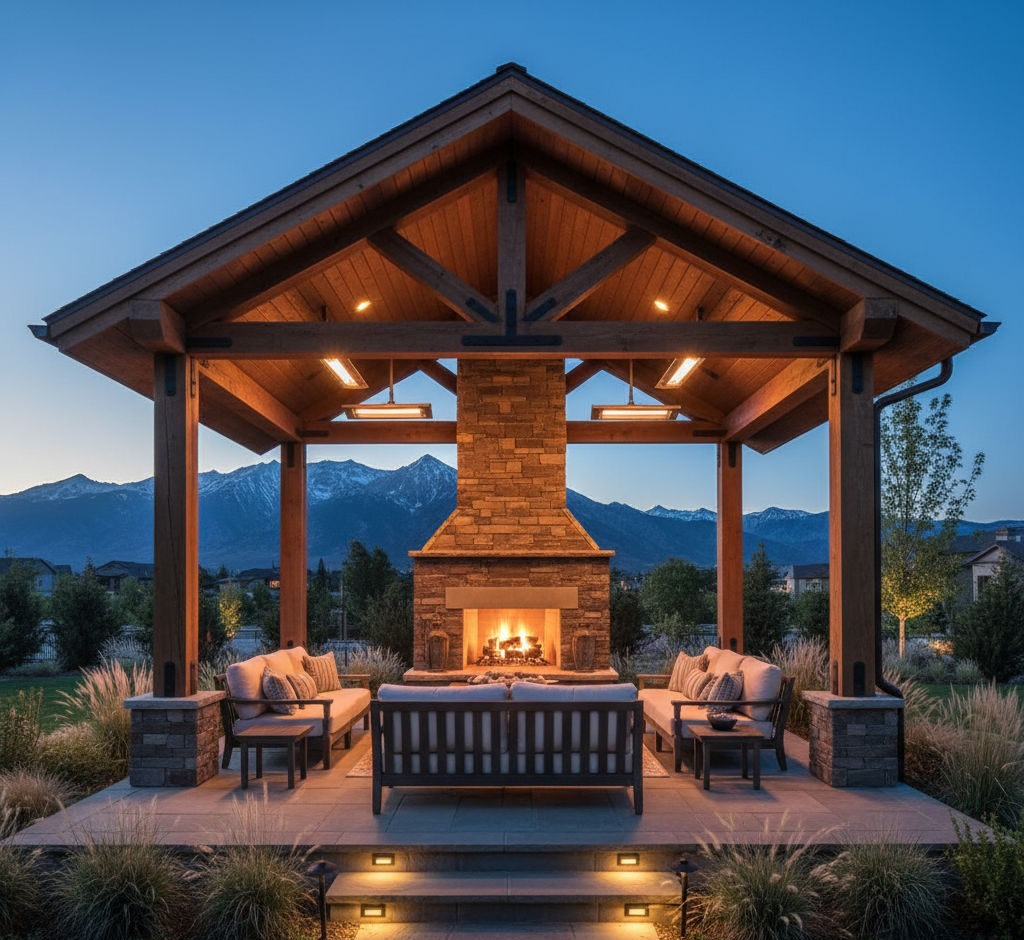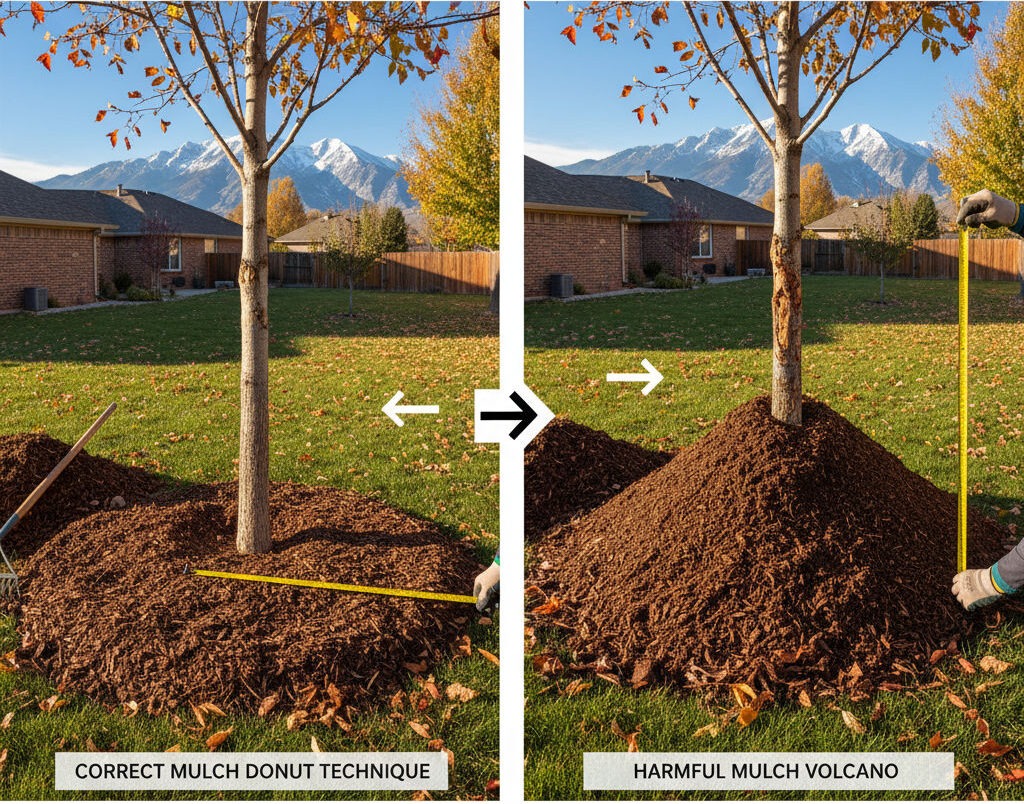Water-wise landscaping is essential for maintaining a lush and healthy commercial property, especially in arid regions like Salt Lake City. Efficient irrigation techniques not only conserve water but also ensure your landscape remains vibrant and attractive. This detailed guide will explore various irrigation methods, smart irrigation controllers, and best practices for water-wise landscaping in commercial properties.
Understanding Water-Wise Landscaping
Water-wise landscaping, also known as xeriscaping, focuses on using water-efficient practices to maintain healthy landscapes. This approach is particularly important in Salt Lake City, where water conservation is crucial due to the region’s semi-arid climate. Implementing water-wise landscaping techniques helps reduce water consumption, lower maintenance costs, and create sustainable commercial landscapes.
Efficient Irrigation Techniques
Drip Irrigation Systems
Drip irrigation is one of the most efficient methods for watering plants. This system delivers water directly to the root zone, minimizing evaporation and runoff. It is ideal for landscapes with various plant types, as it can be tailored to provide precise water amounts to different areas.
- Advantages:
- Reduces water waste
- Minimizes weed growth by targeting specific plants
- Prevents soil erosion
- Improves plant health by providing consistent moisture
Sprinkler Systems
Sprinkler systems are commonly used for large lawns and open areas. To maximize efficiency, choose high-efficiency sprinkler heads that distribute water evenly and reduce misting and evaporation.
- Types of Sprinkler Heads:
- Rotary Nozzles: Deliver water slowly and uniformly, reducing runoff.
- Spray Heads: Ideal for smaller areas, but require careful calibration to avoid overwatering.
- Bubbler Heads: Suitable for trees and shrubs, providing water directly to the root zone.
Soaker Hoses
Soaker hoses are porous hoses that release water slowly along their length. They are an effective option for garden beds, shrubs, and trees.
- Advantages:
- Evenly distributes water
- Reduces evaporation
- Easy to install and move
Smart Irrigation Controllers
What Are Smart Irrigation Controllers?
Smart irrigation controllers are advanced devices that adjust watering schedules based on real-time weather data, soil moisture levels, and plant needs. These controllers help optimize water use, ensuring your landscape receives the right amount of water at the right time.
Benefits of Smart Irrigation Controllers
- Water Savings: Automatically adjust watering based on weather conditions, reducing unnecessary watering.
- Convenience: Remote access allows you to control your irrigation system from anywhere using a smartphone or computer.
- Customization: Create customized watering schedules for different zones in your landscape.
- Healthier Plants: Provide consistent moisture levels, promoting healthier plant growth.
Popular Smart Irrigation Controllers
- Rachio Smart Sprinkler Controller: Easy to install and integrates with various smart home systems.
- RainMachine Touch HD: Offers detailed weather data and allows manual adjustments.
- Orbit B-hyve: Affordable and user-friendly with weather-based scheduling.
Best Practices for Water-Wise Landscaping
Soil Preparation and Mulching
Proper soil preparation and mulching are crucial for water-wise landscaping. Healthy soil retains moisture better and supports plant growth.
- Soil Preparation: Amend the soil with organic matter to improve water retention and drainage.
- Mulching: Apply a layer of mulch around plants to reduce evaporation, suppress weeds, and regulate soil temperature.
Plant Selection
Choose drought-tolerant and native plants that require less water and are well-suited to Salt Lake City’s climate.
- Drought-Tolerant Plants: Lavender, yucca, and sedum are excellent choices.
- Native Plants: Penstemon, sagebrush, and serviceberry thrive in the local climate and soil conditions.
Zoning
Group plants with similar water needs together to create irrigation zones. This allows you to tailor watering schedules and amounts for each zone, improving efficiency and plant health.
Watering Schedules
Set watering schedules based on plant needs and seasonal changes. Watering early in the morning reduces evaporation and allows plants to absorb moisture before the heat of the day.
Regular Maintenance
Regularly inspect and maintain your irrigation system to ensure it operates efficiently. Check for leaks, clogged nozzles, and broken sprinkler heads, and make necessary repairs promptly.
Implementing Water-Wise Landscaping in Salt Lake City
Case Study: Successful Water-Wise Landscaping Project
One of our recent projects involved transforming a commercial property in Salt Lake City into a water-wise landscape. By installing a drip irrigation system, using smart irrigation controllers, and selecting drought-tolerant plants, we reduced water usage by 40% while maintaining a lush and attractive landscape. This project highlights the effectiveness of water-wise landscaping techniques and their benefits for commercial properties.
Steps to Get Started
- Assess Your Landscape: Evaluate your current irrigation system, plant types, and soil conditions.
- Develop a Plan: Create a water-wise landscaping plan that includes efficient irrigation techniques, plant selection, and zoning.
- Install Efficient Irrigation Systems: Choose the appropriate irrigation system for your landscape and install it correctly.
- Implement Best Practices: Follow soil preparation, mulching, and maintenance best practices to optimize water use.
- Monitor and Adjust: Regularly monitor your irrigation system and make adjustments based on weather conditions and plant needs.
Water-wise landscaping is essential for maintaining a thriving commercial property in Salt Lake City. By implementing efficient irrigation techniques, using smart irrigation controllers, and following best practices, you can conserve water while ensuring your landscape remains healthy and attractive. Start transforming your commercial property today with these water-wise landscaping strategies.



